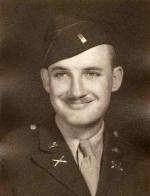
History
History of Robinson Barracks
Elementary/Middle School
The original facilities were built in 1934. They were to be used as the Southwest Regional Headquarters for the S.A. Storm Troopers, or brown shirts. The building was designed by Hermann Sippel, a German architect. His name is imprinted in a brick by the door near the main office.
After World War II, which ended in 1945, the school was used as a military hospital, first for French Forces, and later for American Forces. In 1950, the original building was converted to a school for the dependents of military members stationed in Stuttgart. At first it was known as Stuttgart American Elementary School. Several years later, when seventh and eighth grade classrooms were added, the school became known as Stuttgart Elementary and Junior High School.
In 1959, when A.F.N. established its Stuttgart Branch at Robinson Barracks, more new classrooms were added. The junior high school students, including ninth graders, were bused in from the surrounding military communities of Pattonville, Nellingen, Boeblingen, Patch, and from the German economy. With the completion of Ludwigsburg Middle School and Patch Junior High and High School in 1979, the student enrollment was significantly reduced, as 7th, 8th, and 9th graders from Pattonville, Patch, and Boeblingen were reassigned to the new schools. Also, in the late 70's, a Center for Exceptional Children, or CEC, was added to our school. This facility included pre-school and school age handicapped children from all over the greater Stuttgart Military Community.
During the 1985-86 school year, both the gymnasium and the elementary wing were completely renovated. The cafetorium, a combination cafeteria and auditorium, was remodeled with a completely new and modernized kitchen and opened for our use during the fall of 1989. The spring of 1989 again brought more construction. Students in the 7th and 8th grades attended classes at Valdez Barracks in Ludwigsburg from the spring of 1989 to the spring of 1991 while the final phase of the construction was being completed.
On April 25, 1991, a ribbon-cutting ceremony was held to celebrate the opening of our new facility. The renovated building included several new regular classrooms and a new and completely equipped home economics lab, industrial arts facility, music room, kindergarten wing, special education wing, media center, a beautiful new playground, and a new supply and storage area as well as new administrative offices.
Along with newly renovated facilities, school year 1990-91 also brought a new school name, Robinson Barracks Elementary and Middle School. Even then, renovation continued. During the 1991-92 school year, a complete exterior remodeling project began for our main elementary building. This project was completed in August 1992. During school year 1992-93 the school configuration changed due to the downsizing of troops in Europe. The school became K-6, Robinson Barracks Elementary School (RBES). Since school year 1993-94, the K-6 configuration remained constant. The junior high students, grades seven and eight, begun attending Patch Junior and Senior High School in school year 1992-93.
Current research cites that middle school students attending a K-8 school configuration rather than a 7-12 grade configuration performs better in school. Thus, during school year 2006-07, the seventh and eighth grade students returned to Robinson Barracks to join the K-6 grade levels. Once again, it is Robinson Barracks Elementary and Middle School.
The History of Robinson Barracks
Robinson Barracks was named for 1st Lt. James Robinson, Jr., 63rd Infantry Division, who was awarded the Medal of Honor posthumously.
James E. Robinson, Jr. (July 10, 1918 – April 6, 1945) was a United States Army officer and a recipient of the United States military's highest decoration—the Medal of Honor—for his actions in World War II. Robinson was born In Toledo, Ohio, and was serving as first lieutenant in the U.S. Army near Untergriesheim, Germany, on 6 April 1945. Eight hours of desperate fighting over open terrain had decimated Lieutenant Robinson’s company, robbing it of its commanding officer and most key enlisted personnel, when he rallied the remaining 23 riflemen and led them in a charge against the objective. Ten German infantrymen in foxholes threatened to stop the assault, but the gallant leader killed them all at point-blank range. He then pressed on with his men and cleared the area. Ordered then to take the defended town of Kressbach, he went to each of the 19 exhausted survivors, instilling in them renewed courage and fortitude, before leading them forward once more. In the advance he was seriously wounded in the neck by a shell fragment. Refusing medical attention, Lieutenant Robinson continued the attack and directed supporting artillery fire, even though mortally wounded. Only after victory was attained did he leave the command and walk nearly 2 miles to an aid station where he died from his wound. For his intrepid leadership, devotion to duty, and the supreme sacrifice, Lieutenant Robinson was posthumously awarded the Medal of Honor on December 11, 1945.
Robinson, aged 26 at his death, was buried in Fort Sam Houston National Cemetery, San Antonio, Texas.
